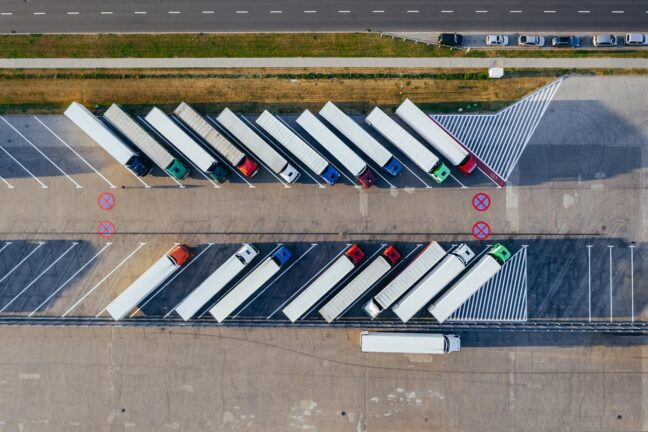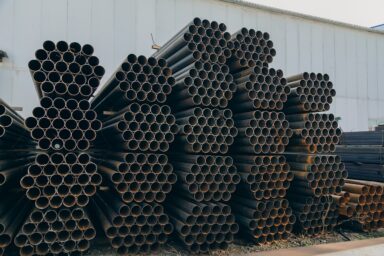The European Commission has signalled plans to extend toll exemptions for electric and hydrogen trucks until 2031. This extension is seen as a critical incentive for hauliers to modernise fleets and meet emissions targets.
The proposed extension follows a 2022 update to the Eurovignette Directive, allowing EU countries to waive road tolls for green heavy-duty vehicles. The aim is to accelerate the shift to zero-emission freight with renewed urgency, since the number of long-haul zero-emission trucks on European roads remains small. Freight transport accounts for more than seven per cent of the EU’s overall CO₂ emissions, so speeding up the transition is critical if the EU is to meet its climate goals.
What specific changes does accelerating the progress require? While the share of new zero-emission trucks registered in the first quarter of 2025 rose to 3.5 per cent (up from 2% in Q1 2024), diesel trucks still dominate the European fleet making up over 90 per cent of all heavy-duty vehicles on the road. Battery-electric and hydrogen trucks are gaining momentum, but still account for less than one per cent of the total.
In a press release this week, Apostolos Tzitzikostas, European Commissioner for Transport and Tourism, stressed the EU’s need to “support European companies and reward those leading the way in the transition to a low-carbon economy.” With some six million heavy-duty vehicles on European roads, the push for green alternatives is fairly urgent.
You might be interested
Expensive? You bet!
Toll exemptions can help offset the steep upfront cost of green trucks, which can reach €200k or even more. Max Mollière, a principal researcher at Transport & Environment, a major European environmental advocacy group, says the extension is crucial for the EU to meet its carbon reduction targets—a 45 per cent cut in emissions from newly registered green trucks by 2030, and 90 per cent overall by 2040. These targets are part of the EU’s Fit for 55 package, which aims to reduce emissions across all sectors to curb climate change.
“The original toll exemption is to expire in six months, which isn’t ideal if the goal is to meet EU targets,” says Mollière. “Extending it to 2031 will make emissions reductions achievable, helping to reach the 2030 target.”
Without such incentives, Mollière warns, the transition to green trucks could stall, undermining the EU’s broader decarbonisation efforts. At the same time, the toll exemption is just one piece of the puzzle.
“Is it enough on its own? No,” the researcher says. “But the Commission is also working on mobile charging, payload adjustments, and a range of other measures to create the necessary infrastructure for green trucks.”
Preparing for the future green fleet
These infrastructure projects are vital, since the limited availability of charging stations for electric trucks is one of the main barriers to their widespread adoption. A complete transition will require significant investments in infrastructure, such as creating a network of charging stations and maintenance facilities. The European Commission has allocated significant funding for green transport infrastructure, including through the Alternative Fuels Infrastructure Facility (AFIF), which supports the deployment of high-capacity charging stations and hydrogen refuelling points for long-haul freight. If the exemption is approved, key goals should remain intact.
The cost depends on the truck’s range. If you go from 500 km to 1,000 km, the battery size doubles. – Max Mollière, researcher at Transport & Environment
Though the exemption makes zero-emission trucks more attractive now, it won’t last forever. Industry forecasts predict that electric and hydrogen trucks will reach cost of ownership parity with diesel trucks by 2030–2035. The real opportunity is to get more hauliers on board early, ensuring larger emissions reductions over the next decade.
Crunch time
Some projections have been promising: according to a joint study by PwC’s Strategy& and the Fraunhofer Institute, full fleet electrification could reduce EU road transport emissions by around 370 million tonnes of CO₂ annually by 2040 — a reduction equivalent to nearly 70 per cent of current levels. In transport, the cost of heavy trucks themselves will go down as production rises and battery technology improves, though some exceptions are likely to remain, Mollière confirmed.
“The cost depends on the truck’s range. If you go from 500 km to 1,000 km, the battery size doubles. This increases the price, so some green long-haul vehicles may remain expensive even in 2040,” the researcher says.
The transition to zero-emission freight may seem distant but, in reality, decisions made in the coming months will be critical in keeping emissions reduction on track. The toll exemption proposal now moves to the ordinary legislative process, requiring approval from both the European Parliament and the Council.











